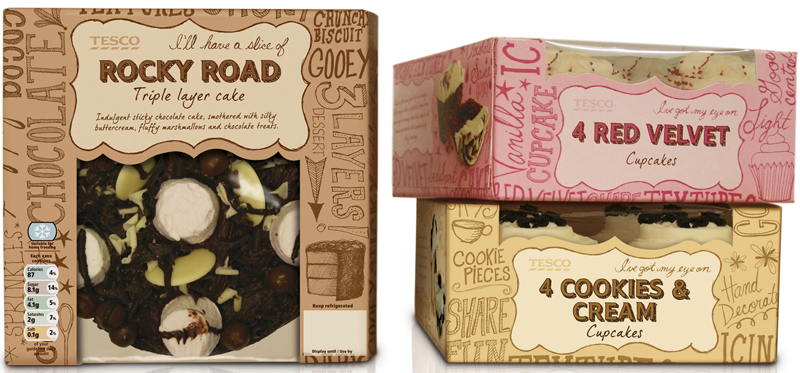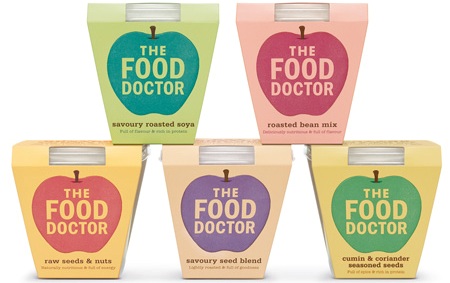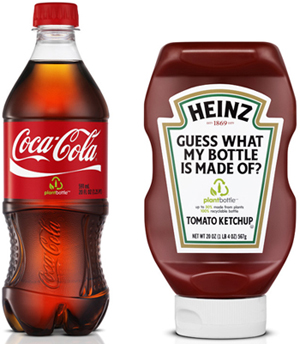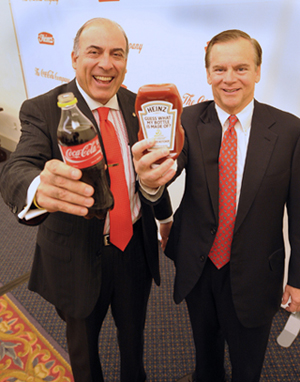I don't know whether I should use seeded paper or a pack of seeds? It would be greener by decreasing the amount of packaging. Look at cutting them into shapes to represent the herbs.
I have left Earth as we know it, and entered the three-storey Daylesford Organic shop and café in Pimlico. The people on this planet are different – richer, certainly, and somehow softer, cushioned in cashmere and linen. The food is different, too. While the mother ship may be the organic farm shop at Daylesford near Kingham in Gloucestershire, Pimlico is fast being colonised, the shop being joined recently by a village butcher, garden nursery, and fashion/lifestyle store and café in Sloane Square.
The planet of Daylesford Organic is almost completely self-sufficient. Breakfasts consist of its own organic eggs, boiled, with toast soldiers. Bread is baked from its own flour, "milled for us by a local miller". Organic milk from its own Friesians goes into its own cheddar cheese. Organic vegetables are grown in rotation on its "rich loam soil". Meat is from its own estates in Gloucestershire and Staffordshire. And Daylesford Organic even sells its own wine, from another sister estate, Château de Léoube in Provence. All estates are owned "and preserved" by Lady Carole Bamford and the Bamford family.
In Pimlico today, an elegant row of outdoor tables is buffetted by ugly squalls, but spring sunshine floods intermittently through the windows, resting on thin-crust pizza, apple tarts, and lunchtime sandwiches sold in the bakery area.
There is food everywhere, piled high against white walls and on wooden tables. A long, marble communal table leads towards a serious cheese counter, while stairs go down to a wine shop and up to things for the home and kitchen. Around me, stylish locals hunch over slimline computers, architects discuss swatches with American clients, and French women order croissants for their well-behaved children.
It's beautiful in a perfect-world, dream-like way, but it's also a bit much. Everything is for sale, from the willow cockerel (£19.95) perched in the middle of the table to the hand-blown water glass (£45) and egg cup (£11.95). I came for breakfast – three gently baked, brightly yolked eggs topped with a few folds of harshly smoked salmon and a lick of cream in a cast-iron fry pan (£13) – and now return for lunch.
The menu reads like a simple list of soups, salads and mains, but the reality can be more arthouse than farmhouse. A deep bowl holds leek and potato soup (£6.95) that is rich and subtly creamy; and the freshly baked breads and olive oil (£4) are terrific. A springtime main course of salmon and truffled chicken boudin in carrot butter (£13.95) is well-cooked, colourful, and quite delicious, but other dishes seem completely ill at ease with their surroundings. A salad of Jerusalem and globe artichoke is an artistic creation of swirls and curls more suited to Michel Bras; and my neighbour's oxtail (£13.95) is bizarre, the meat re-formed around chicken mousse, served with an upright Ferris wheel of potato gallette. This is so not farm-shop food; it sets the entire table giggling.
To drink, a refreshing, uncomplicated Château de Léoube biodynamic rosé (£4/ £16) is a good-value lunchtime wine, while a Domaine Vacheron 2006 Sancerre (£5.55/ £28) is clean and balanced; class in a glass.
The management maintains there is a "team of chefs" rather than one, so perhaps they, too, are free-range and allowed to roam the culinary world where'er they like. But they are missing the point, and should be responding instinctively to the wonderful, chemical-free ingredients they are given, cooking them simply and well.
Daylesford Organic could lead the way to a future when every high street has its farm shop, selling directly from the land to consumers, reducing food miles, packaging and supermarket power. Or it could peter out in a welter of designer produce served up in a rural fantasy for the privileged few. I hope the former. I fear the latter.
13/20
Scores: 1-9 stay home and cook, 10-11 needs help, 12 ok, 13 pleasant enough, 14 good, 15 very good, 16 capable of greatness, 17 special, can't wait to go back, 18 highly honourable, 19 unique and memorable, 20 as good as it gets
Daylesford Organic, 44B Pimlico Road, London SW1, tel: 020 7881 8060. Open from 8am-8pm daily. Around £60 for lunch for two, including wine and service
Read Terry Durack's new column at independent.co.uk/eat
Second helpings: More organic outlets
The Walnut Club
The Square, Main Road, Hathersage, Derbyshire, tel: 01433 651 155
Idyllically located in the Peak National Park, this was one of Britain's first organic restaurants. The lively modern menu runs to duck and licorice ravioli
The Duke of Cambridge
30 St Peter's Street, London N1, tel: 020 7359 3066
The world's first certified organic gastropub serves up hearty pub grub made with fresh organic produce, as well as a range of organic beers and wines
Percy's
Coombeshead Estate, Virginstow, Devon EX21, tel: 01409 211 236
Set on a 130-acre organic estate, Percy's serves up its own lamb, eggs, herbs and veg, as well as local wild mushrooms, game, chicken and ducks from Exmoor


















































